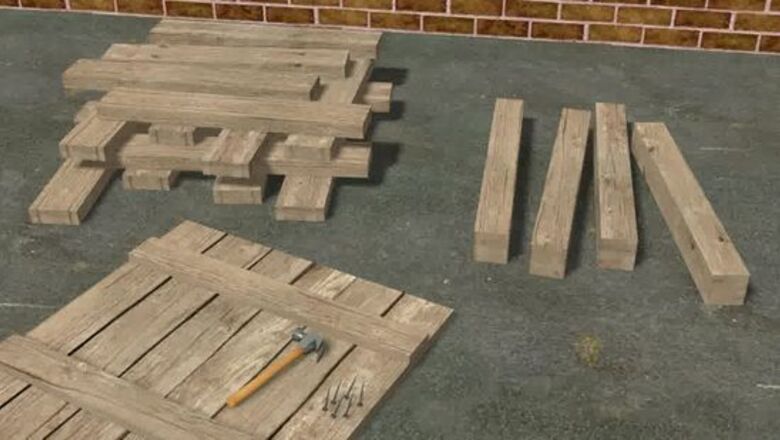
views
Building a General-Purpose Compost Bin
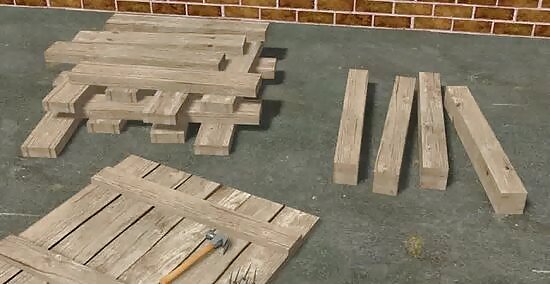
Gather your materials. For this basic compost bin, you'll want untreated wood. Untreated wood will last for a plenty long time, and the treatment won't interfere with the composting process or overwhelm helpful fauna. Cedar is a great option. You'll need: Four pieces of 2 x 2s or 4 x9s lumber, cut to 3' lengths. These posts will serve as the four corners to your square compost bin. Opt for rough, unplaned wood. 8-16 pieces of 2 x 6 lumber, again cut to 3' length. These boards will make up the walls of your compost bin. Most compost bins have spaces between the exterior boards for aeration; how big you want your spaces to be will depend on whether you use 8, 12, or 16 pieces of lumber. 9 square foot cover, preferably made of solid wood. A solid cover will help maintain a more consistent internal temperature for your compost bin. Galvanized nails or coated deck screws.
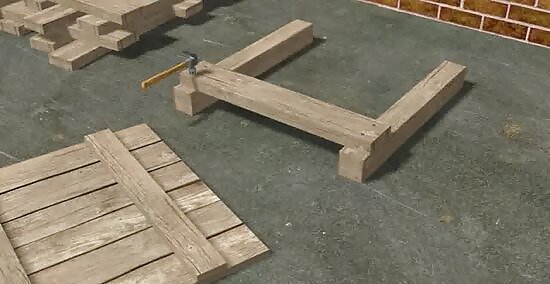
Nail one 2 x 6 board across the bottom of two 4 x 4s. Place the two 4 x 4s on the ground, 3' apart so that the 2 x 6 fits evenly on either end. Measure off one or two inches from the bottom of each 4 x 4 so that the 2 x 6 will be level. Place the 2 x 6 onto the 4 x 4s and drive two nails into each 4 x 4.
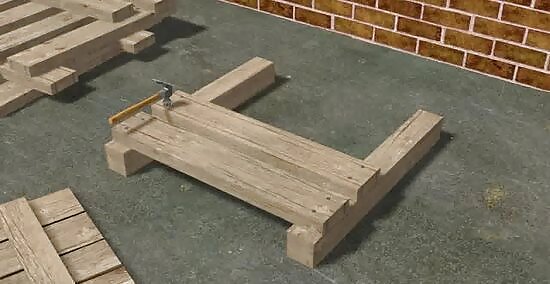
Measure the amount of space you want between each 2 x 6 board. You'll want to continue building the wall by nailing 2 x 6s onto the stakes, but you'll also want a little bit of space between each 2 x 6. How much space you choose is up to you. At any rate, you'll want the space between each board to be the same, or else the bin will look less professional and put-together. An inch or two is pretty standard. Any gap larger than two inches won't effectively hold in the material and will leave it exposed to small animals, such as raccoons and opossums.
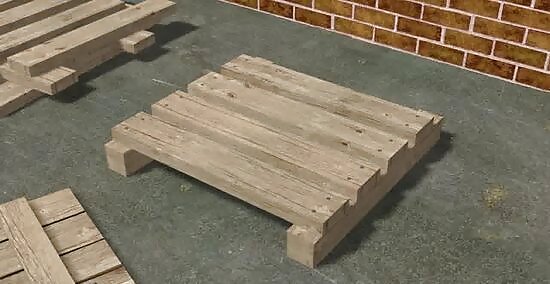
Having chosen your spacing, nail another 2 x 6 onto the 4 x 4 above the previous one. Continue nailing 2 x 6s into place, factoring in the desired spacing, until you reach the top of the wall. At the end of this step, you'll have two vertical 4 x 4s cross-beamed with three or four perpendicular 2 x 6s. This is 1/4 of your square bin.
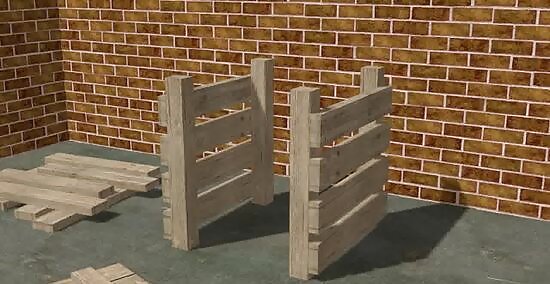
Create another section of the wall in the exact same manner. Put down two 4 x 4s. Measure off one or two inches for your starting point. Then lay a 2 x 6 board perpendicularly over the 4 x 4s, hammering it into place with four nails. Continue placing, then hammering, 2 x 6s perpendicularly over the 4 x 4s — leaving the proper spacing — until you have wall no. 2 assembled. The two walls should be mirror images of one another.
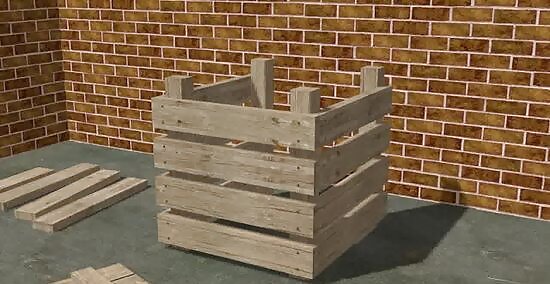
Prop up the two walls parallel to one another and connect the back end of the bin with a perpendicular 2 x 6. As with the previous 2 x 6s, measure off from the bottom, drive in four nails, and space each one evenly. Hammer down 2 x 6s across the back wall of the 4 x 4 until the bin has three walls entirely built. Make sure to offset the nails you drive into the 2 x 6s so that they don't collide with the nails driven into the 4 x 4s in the previous steps.
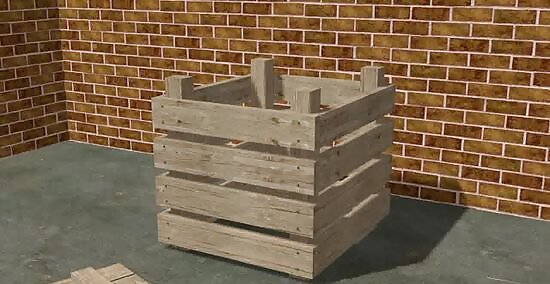
Complete the bin by placing the final boards perpendicularly across the front side. Hammer three or four 2 x 6s across the front face of the bin, following the same routine and remembering to offset the nails. For greater ease of use, make the front side removable either by adding hinges to the front boards or grooves for them to slide in and out of. This will make the easier to stir, turn, or remove the compost when needed.
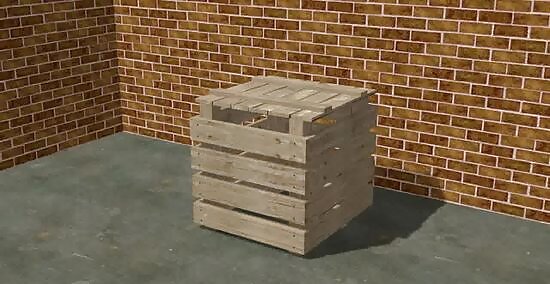
Cover with a 9 square foot cover. You can use a tarp or wood for the compost bin, although wood is decidedly better at retaining heat over the long run. If you desire, consider making two small wooden handles and attaching them to either side of your cover for easier placement.
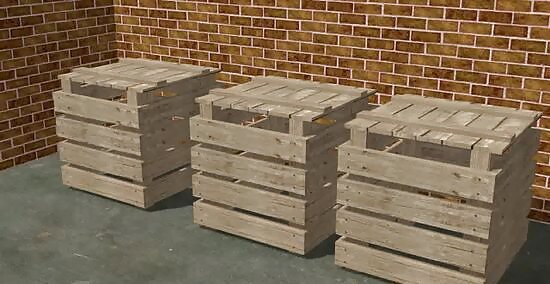
Consider making one or two more identical bins so that you can have a turning unit. One bin contains active compost material; another bin contains processed (or processing) compost materials; the final bin contains soil you'll use to cover the active compost bin.
Building a Yard-Waste-Only Compost Bin
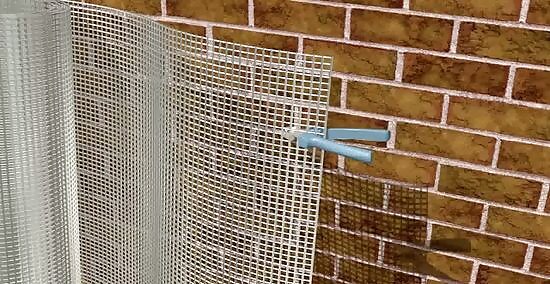
Cut out a large rectangle of chicken wire. This will form the body of your compost bin, which will be a cylinder shape. This bin will be able to compost things like yard waste, sawdust, and leaves. It can only be used outdoors over soil and will compost very slowly. The height of the rectangle will be the height of your bin. The length of the rectangle will be the diameter of your bin. If you're not sure where to begin, hold the uncut chicken wire in front of you to get a sense of how tall and wide you'd like it to be. Since you'll be filling this bin with yard waste, err on the large side.
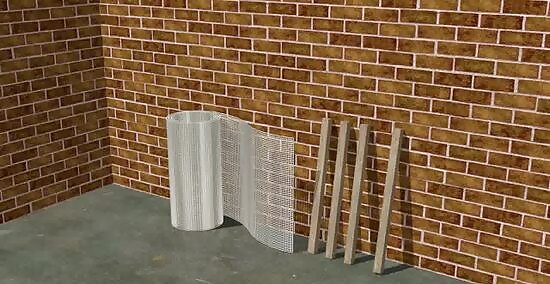
Make four stakes out of scrap wood. These will be staked into the ground to maintain the shape of your wire bin, so be sure that they are longer than the height of your chicken wire.
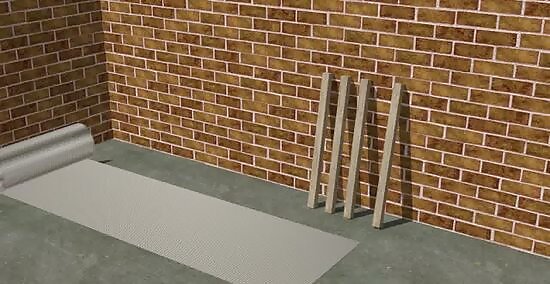
Flatten your rectangle of chicken wire onto the ground. Stretching it out will make it easier to work with.
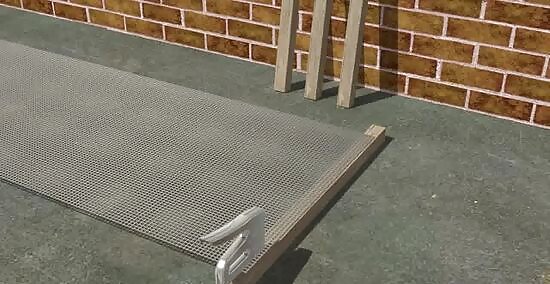
Using a staple gun, attach a stake along one of the short edges of your chicken wire. This works best of you place the stake beneath the wire. The top of the stake should stick out slightly above the top of the wire.
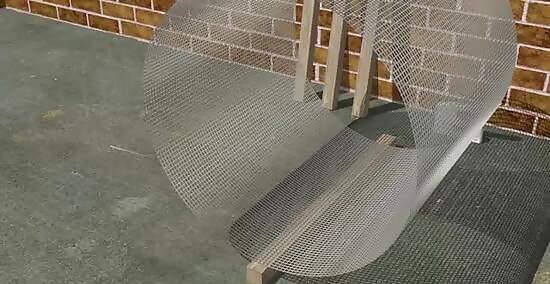
Roll the other side of the chicken wire up and over so that the unstacked end overlaps the staked end. Your chicken wire should now be in the shape of a cylinder.
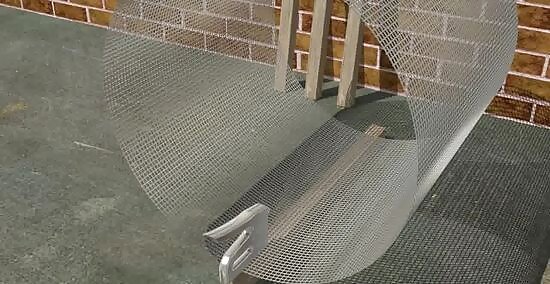
Staple the edge of your chicken wire along the stake. It may be necessary to crawl inside the wire to reach the stake better.
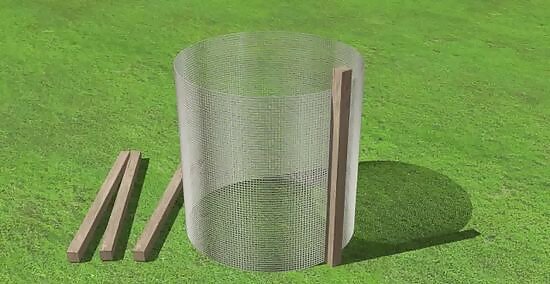
Stake your unfinished bin into the ground. Make sure you choose a spot that won't get in your way later.
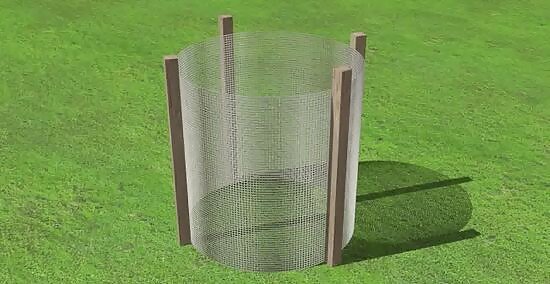
Drive your other three stakes into the ground around the bin. Be sure to stake them close enough to the wire that they don't pull it out of shape. When you are done, the four stakes should be in the shape of a square.
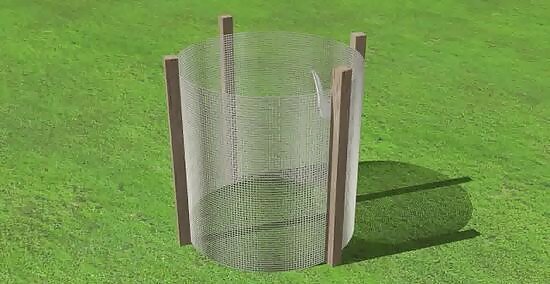
Staple the remaining stakes to the chicken wire. Once the bin is fully secured, you can start filling it with yard waste.
Using Your Compost Bin
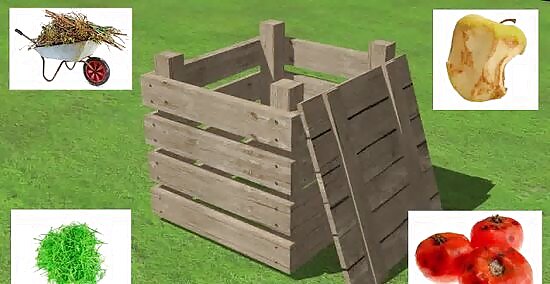
Put anything into your compost bin except the following materials. All organic matter will eventually decompose if you give it enough time. Grass, garden clippings, leftover fruits and vegetables, and certain animal manure are all fair game for your compost bin. Less advised is throwing meat, bones, and dairy (cheese, etc.) into the compost heap. Animal manure like cow and chicken manure is fine, but try to avoid cat or dog manure.
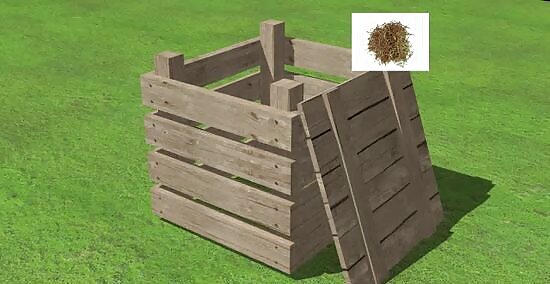
Know your greens and browns. Green compostable materials, which contain essential sources of nitrogen, include grasses, garden clippings, and green leaves. They are mostly moist. Brown compostable materials, which contain carbon-rich materials, include drier materials such as hay, twigs, and shredded cardboard. A mix of two parts green to one part brown is the ideal compost ratio. You don't have to be exact with your ratios. As long as you don't have an abundance of greens or an abundance of browns, your compost should turn out nutrient-rich and successful.
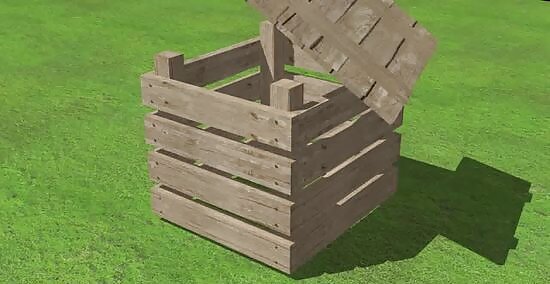
Shred your materials up for expedited composting. If you want to speed up the pace of your compost cycle, make sure to shred your materials before adding them to the bin. Grass clippings, of course, come pre-shredded, but you may want to put your twigs, hay, and other dry matter through the shredder in order to enlarge its surface area. The larger the surface area, the more the small animals and bacteria can process.

Pay attention to heat and moisture in your compost pile. In order to get the composting kickstarted, your pile needs to be hot and wet. The two biggest problems a compost system encounters are lack of heat and lack of moisture. These affect the composting process in different ways. Try to keep the internal heat of your compost bin at 110 °F (43 °C) or higher. Between 110 °F (43 °C) and 140 °F (60 °C) is the ideal temperature for your pile. If your pile dips below 110 °F (43 °C), consider adding more green nitrogen-rich material or more water. Try to keep the compost pile damp throughout — never soaked and never dry. A moist pile will heat up more efficiently, allowing for better composing in the end.

Stir your compost with a strong pole or tool, making sure to cover your food scraps with dirt. A pitchfork is recommended and will work best. Mixing the compost will help breakdown the scraps faster. Mixing sinks the superficial compost to the bottom and brings the bottom-dwelling compost up top. Give your compost a stir every other day, especially if you notice it not getting hot enough.
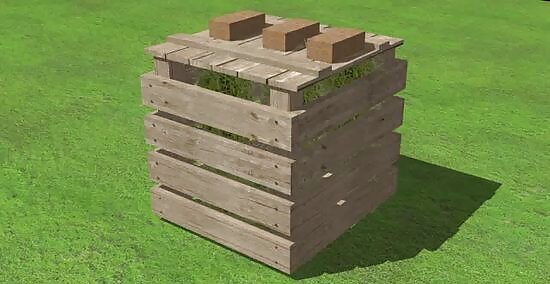
Keep the compost cover anchored down with a heavy object in order to discourage looting from animals. A couple heavy bricks, placed near the center of your compost cover, will effectively keep animals like raccoons and opossums from throwing off the cover and looting your compost for easy pickings.















Comments
0 comment